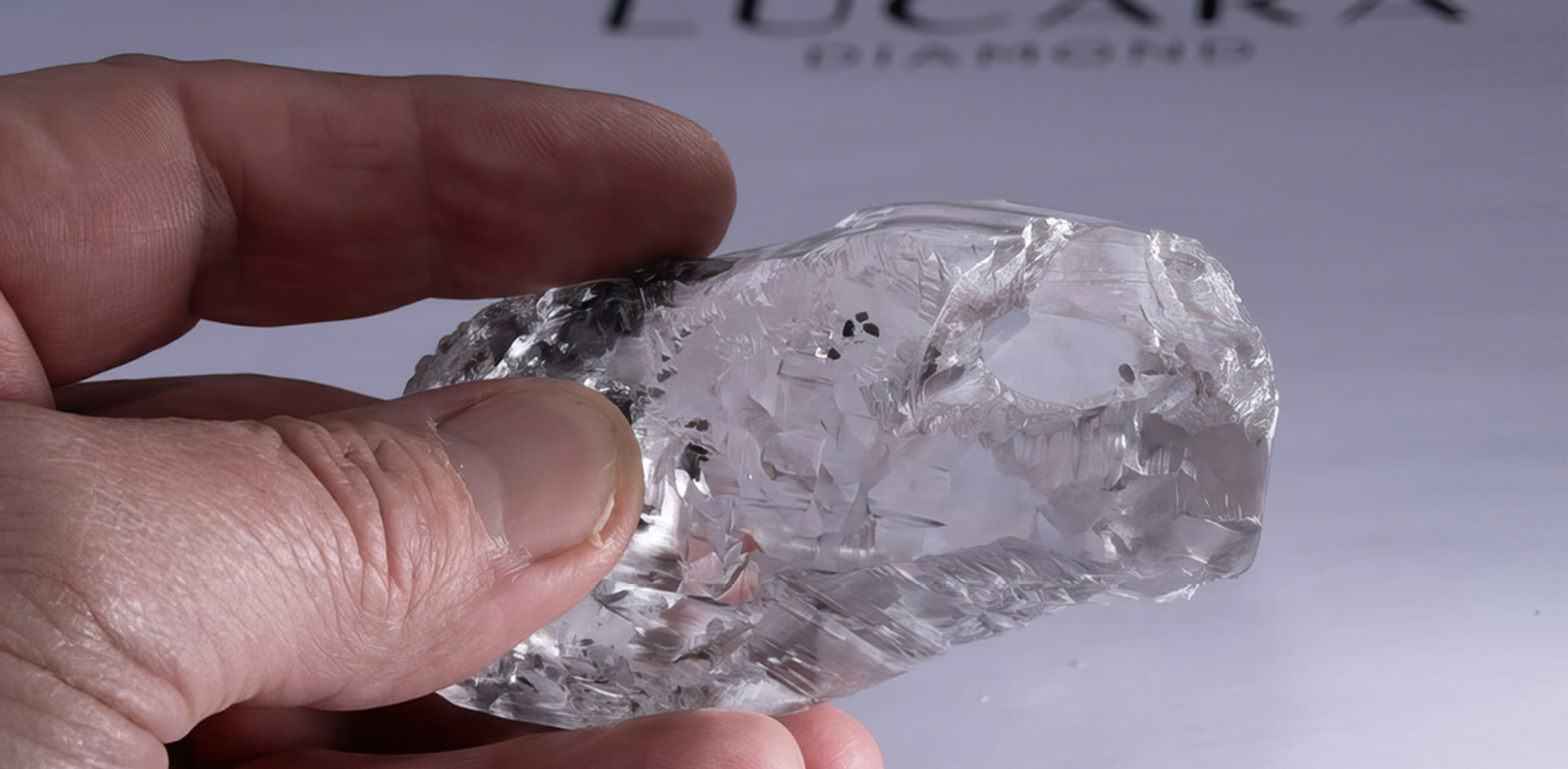Massive Discovery Welcomes a New Diamond to the Ranks of the Ten-Largest Ever

Lucara Diamond Corp. has announced a discovery that will be etched into natural diamond history. A gorgeous natural diamond weighing 1,080.10 carats was discovered at their Karowe mine located in Botswana. Its massive size puts it at approximately the seventh-largest diamond ever discovered and the top five largest colorless diamonds ever discovered. The Karowe mine in Botswana is legendary for producing some of the largest diamond finds of all time. In fact, roughly half of the ten largest diamonds ever discovered have been found at Karowe. The 1,080.10-carat discovery represents the fourth +1,000-carat diamond recovered from the specific area since 2015. The other notable recoveries include the 1,758-carat Sewelô (2019), a 1,174-carat diamond (2021), and the 1,109-carat Lesedi La Rona (2015).
Lucara CEO Eira Thomas said, “Lucara is extremely pleased to be reporting the recovery of another large, high-quality gem diamond in excess of 1,000 carats in size, representing our fourth diamond over 1,000 carats since 2015. As we progress mining deeper in the open pit and transition to underground mining, exclusively in the South Lobe, the preponderance of large, high-value stones is increasing, consistent with the resource model and underpins the strong economic rationale for investing in the underground expansion that will extend the mine-life out to at least 2040.”
To put its size in perspective, the diamond measures 82.2 x 42.8 x 34.2 mm or 3.23 x 1.68 x 0.95 inches. The diamond is described as a high-quality Type IIa top white gem. Type IIa is a rare diamond type making up only 1-2% of all diamonds; they have no measurable nitrogen or boron impurities and are most often colorless and very high quality.

Rarity doesn’t begin to describe a diamond of this size. However, throughout the thousands of years of history of diamond discovery, it is believed that more diamonds of this size may have existed but were unfortunately broken into small pieces in the recovery process. Improvements in the technology of diamond recovery in the last couple of decades could explain why the Karowe mine has seen several significant discoveries since 2015. This new discovery was recovered in the Coarse XRT unit at Karowe, which is an X-ray technology that has improved diamond recovery and helps from breaking diamonds in the process.

Every child in Botswana is guaranteed a free primary and secondary school education thanks to the diamond industry.
Botswana, where the stone was recovered, is the world’s largest producer of diamonds by value. Natural diamond recovery’s benefit in Botswana and its people cannot be understated. Botswana now has the highest GDP per capita in all of continental Africa, and the diamond industry accounts for 40 percent of the country’s GDP and 90 percent of its exports. Since diamonds were discovered there in the 1950s, Botswana had the fastest-growing economy in the world from 1960 to 1980, primarily driven by mining. Every child in Botswana is guaranteed a free primary and secondary school education thanks to the diamond industry. Also, the environmental protection in Botswana made possible by natural diamond recovery has helped protect countless wildlife. The sale of the new discovery will help contribute to the vast positive impact diamonds have on the country.
One of the most comparable diamonds to the 1,080-carat miracle of nature is the Lesedi La Rona, discovered in 2015. The Lesedi La Rona weighed 1,109 carats and was also colorless. Its sale price of over $53 million to jewelry house Graff can give us an idea of the value of a rough diamond this size. Graff meticulously cut the Lesedi La Rona into a main emerald cut diamond weighing over 300 carats and 66 smaller diamonds. More than likely, we can expect the new discovery to be treated similarly, possibly yielding a main jaw-dropping stone weighing hundreds of carats and some smaller stones cut from the same incredible rough diamond. However, the hands-on, labor-intensive, and artistic process of planning and cutting a rough diamond of this size could take years, so we’ll have to wait and dream of its final form in the meantime.
